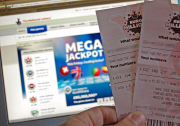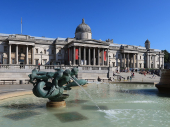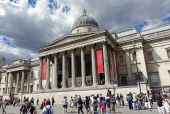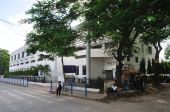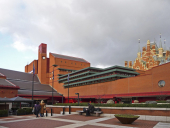
France’s top financial watchdog urged the Louvre Museum to accelerate long-delayed security upgrades in an audit completed shortly before the stunning Oct. 19 theft of crown jewels worth
an estimated US$102 million.
The Cour des Comptes report, released Thursday, highlighted years of lagging investment in the museum’s aging technical and safety infrastructure. Those vulnerabilities were thrust into global view when thieves used a truck-mounted basket lift to access a window of the Apollo Gallery and escape with the royal jewels in a matter of minutes.
“The theft of the crown jewels is undoubtedly a deafening alarm bell,” said Pierre Moscovici, president of the court of auditors, at a news conference.
Covering the 2018–2024 period, the audit found that the Louvre prioritized high-profile initiatives—acquiring new art, improving visitor experience—while delaying essential work on building maintenance and security systems. A plan to modernize surveillance and protection equipment has been under review since 2018, but technical work is only scheduled to begin next year and stretch through 2032.
“The pace is far too slow,” Moscovici said, adding that security could be significantly improved without increasing staffing. Investigators have said the October heist was enabled by outdated systems, not personnel shortages.
The report estimated the total cost of security modernization at €83 million (about US$95 million). Only €3 million has been invested since 2018. The museum has added 134 digital cameras in recent years, but auditors warned broader upgrades remain overdue.
The court recommended shifting resources toward bringing the museum’s technical infrastructure—particularly security—up to standard, while reducing spending on acquisitions and certain renovation projects.
In a statement, the Louvre said it “regretted” that the audit did not fully account for disruptions caused by the COVID-19 pandemic and the 2024 Paris Olympics, though it agreed with most recommendations. It stressed that some security enhancements were already scheduled to begin just weeks after the heist.
Many of those projects fall under the “Louvre New Renaissance” initiative, a sweeping modernization plan launched earlier this year. The effort, expected to cost up to €800 million, aims to update infrastructure, reduce crowding, and create a dedicated gallery for the Mona Lisa by 2031.
Culture Minister Rachida Dati last week ordered the rapid installation of anti-ramming and anti-intrusion barriers around the museum, following an initial inquiry that found a “chronic, structural underestimation” of theft risks. She acknowledged “security gaps” but declined to dismiss the museum’s director, citing failures in risk assessment, equipment, governance, and protocols.
Four suspects, including three believed to be directly involved in the heist, were arrested last week on preliminary charges of organized theft and criminal conspiracy. The stolen jewels have not been recovered. Photo by Jebulon, Wikimedia commons.






